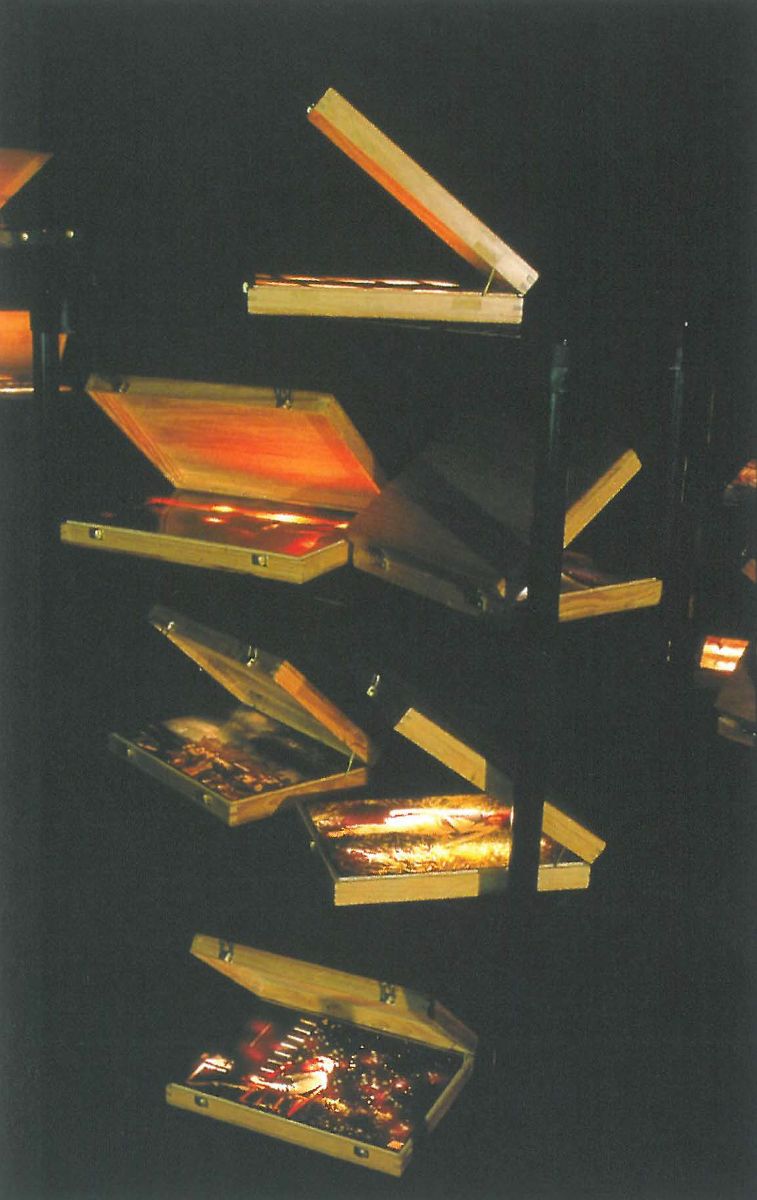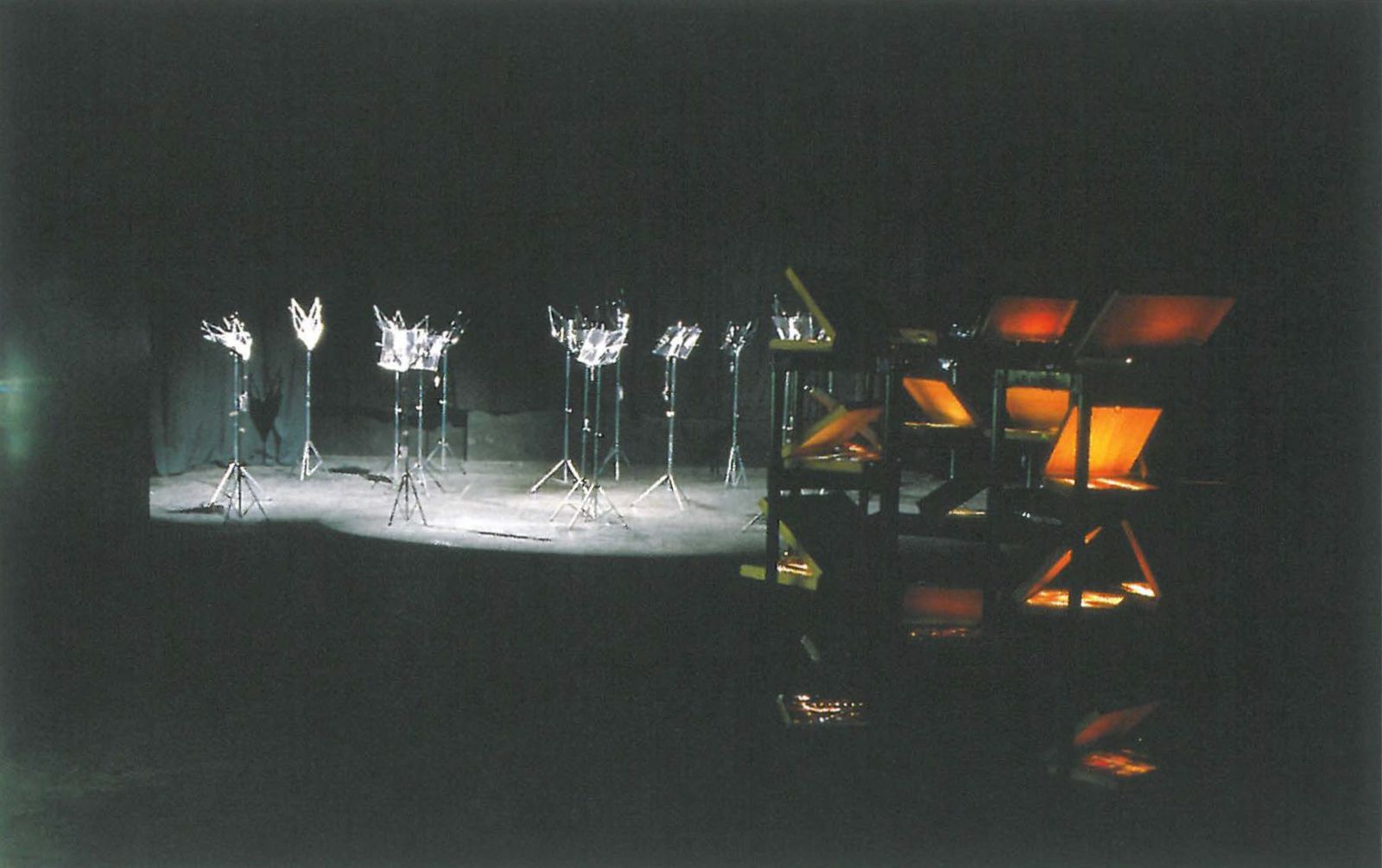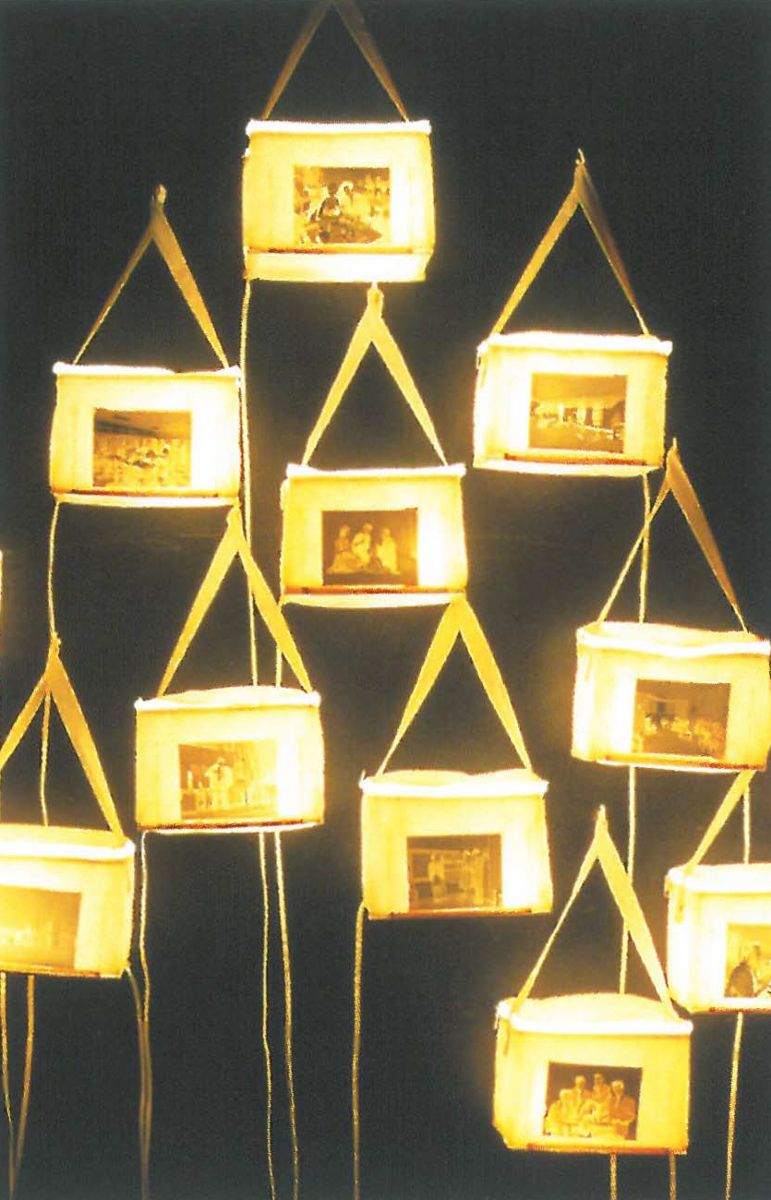
This is a performance space, a space within which an audience collects to witness the theatrical unfolding of narrative.[1] Within this space, Zofia Sleziak presents three installations: assembled, manipulated collections, which offer evidence of an intimate, private performance, which offer also, an open invitation for the viewer to perform, to enact a collaborative narration.
Hanging grouped to the left, visible through the archway at the entrance of the building, is a collection of slightly soiled, apparently aged, white zip-top bags. Each is suspended from a hook on the wall, each by a strap which forms thus a kind of roof line. Each bears a transparency, in the negative, of a dated scene and each is dimly lit from within - the squarish shape of the negatives appearing as crudely articulated doors, proportionately large, impassable thresholds to these house-like forms.
These are found negatives, snapshots from someone else's family album, someone else's memories. They are images to which memory is both attached and foreclosed. They present themselves silently on these curiously similar bags: objects that quietly announce their own specific, foreclosed history. The title of this collection is Climatures. These illuminated, darkly emblazoned cooler bags operate as armatures for a sense of intimate distance: offering a certain climatic measure, a temperate indicator. They are memorials to their own detached, absent and yet palpably present meaning.

Moving towards this cool, implacable collection, past the curtain which screens the space, the rest of the exhibition is encountered as a gesture of opening, a sudden flush. To the right, behind the curtain, more transparencies are mounted, each also backlit in its own container. These transparencies are large by comparison and totally cover the inner cavity of a series of shallow lidded boxes.
This collection is entitled Provenance, suggesting origins and a certain proven source of sustenance. The boxes, each opened at a slightly different angle, are arranged, also at slightly different angles, side by side, back to back on a series of wheeled storage racks. The boxes, similar to those slim cases used by some artists to carry paints and brushes, are utilised as lightboxes. They show soft muted colour, they show faces and bodies, textures of people and things in close-up, they are warm and seductive. Oddly, despite their silence, they appear musical, despite their similar air of detached memory they appear anything but funereal. They emanate, rather, a heightened, simple, melodic energy.
This reference to musicality is echoed in the final installation, which fills the back of the space, occupying the area normally used as a stage. This collection, entitled Notations, is a massed grouping, an orderly composition of music stands. Each is opened, echoing the cases, to a slightly different degree. Each has differently tilted, hinged parts, hugging vinyl notebooks which are custom fitted to the surprising variety of angles formed. These notebooks are transparent: the sort of vinyl that holograms are made of, the sort that makes a satisfying squeak as its surface is stroked, the sort that throws prisms of colour from certain viewpoints. Each of these empty notebooks is bound in its own peculiar manner with braids of woven silver metallic thread. The threads dangle at different lengths from the stands. Each holds a vinyl tag stamped with a fragment of story, a word, a broken sentence: notations of language that appear to assemble and disperse as the stands appear to open and close. The mood generated as each tag is picked up and read is mesmeric. The tags are reached with a sliding of the fingers down the slippery threads to which they are tied: a movement by which the tiniest of notations slowly becomes apparent. Along each thread is a different combination of minute silver balls, read by the fingers like braille. As the noted tags speak of fleeting transient memory, these noted threads recall the presence of the body: conducting, through the fingertips, a sensual rehearsal of material music.

Footnotes
- ^ The Chapel is home to Junction Theatre Company












